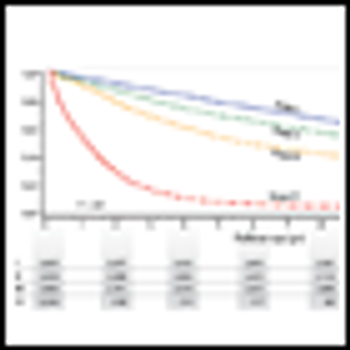Anthony V. D’Amico, MD, PhD
Articles by Anthony V. D’Amico, MD, PhD

ACR Appropriateness Criteria® Postradical Prostatectomy Irradiation in Prostate Cancer
ByGary S. Gustafson, MD,Paul L. Nguyen, MD,Dean G. Assimos, MD,Anthony V. D’Amico, MD, PhD,Alexander R. Gottschalk, MD, PhD,I-Chow Joe Hsu, MD,Shane Lloyd, MD,Patrick W. Mclaughlin, MD,Gregory S. Merrick, MD,Timothy N. Showalter, MD,Al V. Taira, MD,Neha Vapiwala, MD,Yoshiya Yamada, MD,Brian J. Davis, MD, PhD The purpose of this article is to present an updated set of American College of Radiology consensus guidelines formed from an expert panel on the appropriate use of radiation therapy in postprostatectomy prostate cancer.

Not all patients with colorectal cancer are candidates for such screening, however, as a remaining life expectancy of at least 10 years is generally required in order for PSA screening to yield a significant mortality benefit.

In their article, Raldow et al provide an excellent summary of the issues surrounding the use of salvage radiotherapy for a post-prostatectomy recurrence. For practicing clinicians, the pressing issue is how to appropriately select patients for treatment with salvage radiotherapy.

In this issue of ONCOLOGY, Bittner et al provide a thoughtful review of the literature to advocate for the viewpoint that interstitial brachytherapy should be standard of care for the treatment of high-risk prostate cancer.

Drs. Merrick, Wallner, and Butlerhave compiled informationregarding patient selection forprostate brachytherapy[1] and concludethat, “While there is no shortageof opinions regarding symptomsor circumstances that render the useof brachytherapy inadvisable, most arebaseless.” They go on to say that,“Reports to date have failed to establishany firm contraindication.” I amimpressed with the certainty such astatement projects for a disease as heterogeneousas prostate cancer.

The goal of identifying a set of pretreatment risk-stratifying factors for patients with localized prostate cancer is to be able to individualize treatment and optimize patient selection for clinical trials. Low-risk patients are most likely

Information from pathologic stage and pretreatment clinical parameters-prostate-specific antigen (PSA), Gleason score, and clinical stage-can be incorporated into a single construct-calculated prostate cancer volume. It is represented by the quotient of the cancer-specific PSA and the PSA measured in serum per cm3 of prostate cancer of a given Gleason score, where cancer-specific PSA is defined as PSA corrected for the PSA contributed by benign prostatic epithelial cells.




